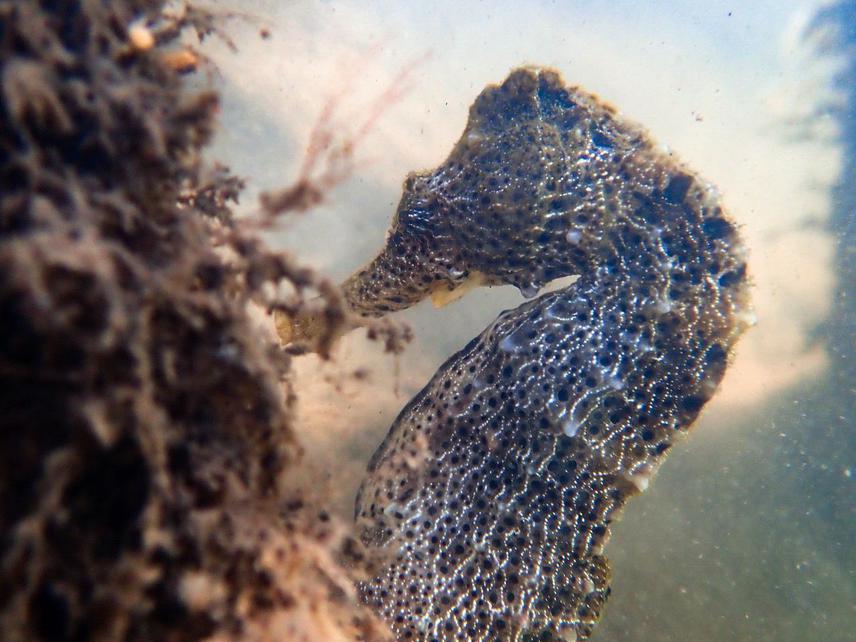Article featuring the project.
Anna Karolina Martins Borges
Other projects
26 Apr 2021
Distribution, Habitat Availability and Population Characteristics of Seahorses in a Brazilian Estuary
Due to multiple threats, seahorses, data-poor and threatened fish, demand urgent conservation actions. Successful long-term conservation relies on strategic planning for pragmatic actions to mitigate threats. In Brazil, the three seahorse species are considered vulnerable. The Rio Formoso Estuary (RFE) exemplifies these challenges, with local pressures—particularly from expanding tourism and intensified nautical traffic—posing a threat to seahorse populations. This estuary represents a complex social-ecological system, characterized by remarkable biodiversity and a multitude of human activities, including tourism, artisanal fishing, and shellfish collection. Evidence shows that populations are decreasing, however, there is no systematic management plan for the species, urging for pragmatic actions. In my first grant, we established that mangroves, vulnerable ecosystems, play a pivotal role in influencing seahorse presence and abundance in the RFE. To effectively plan for the conservation of these critical environments, frameworks integrating social-ecological systems are essential, recognizing the interconnectedness between humans and the natural world and adapting management approaches accordingly. We employed participatory mapping and interviews with artisanal fishers to gather insights about seahorses, their threats, and local community priorities. Combining this valuable local knowledge with existing data we identified the main threats to seahorse in the RFE, and some place-based actions that the local community pointed out as necessary to protect seahorses. Additionally, we identified the priority sites for threat management. These findings provide essential insights and a spatial framework for seahorse conservation in the RFE.

Assessing the local ecological knowledge of artisanal fishers on the distribution, threats and conservation of seahorses in the Rio Formoso Estuary, PE, Brazil. ©Fish and Marine Conservation Lab (LAPEC UEPB).
Moving forward, we aim to leverage these insights to develop a theory of change for seahorse conservation in the RFE, collaboratively planning actions and adaptive management solutions with the local community to ensure the long-term sustainability of their livelihoods and protect seahorses. In essence, the project's three-fold impact lies in providing a comprehensive conservation plan, establishing a long-term monitoring program, and leveraging seahorses as a symbol to promote marine conservation and engage the local community in environmental management. The project's impact extends beyond seahorses, indirectly benefiting other species in the study area. Seahorses are widely recognized as flagship species, with the power to promote marine conservation due to their charismatic and unique characteristics. Besides being threatened, seahorses also inhabit some of the most threatened ecosystems in our world. Promoting seahorse conservation is a unique opportunity to raise awareness for marine conservation, engage people to support the protected area, and benefit the entire ecosystem, including livelihoods.

Hippocampus reidi (longsnout seahorse) in the Rio Formoso Estuary, PE, Brazil. ©Fish and Marine Conservation Lab (LAPEC UEPB).
Header: Hippocampus reidi (longsnout seahorse) in the Rio Formoso Estuary, PE, Brazil. ©Fish and Marine Conservation Lab (LAPEC UEPB).